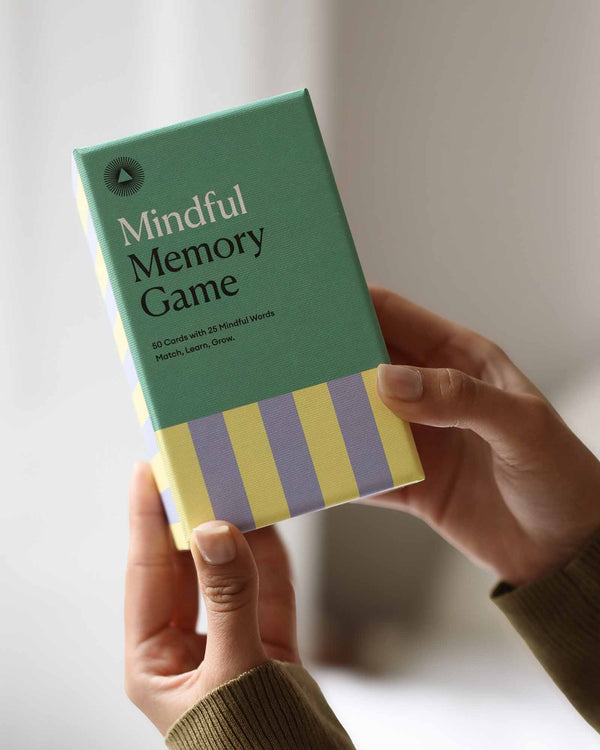Getting Things Done Even When You Don’t Feel Like It: A Simple Guide
by Intelligent Change
We’ve all experienced those days when rolling out of bed and getting things done seem like an impossible mission. As much as we love our jobs, it’s challenging to be productive and motivated all the time.
But the thing is, productivity and motivation can be influenced by various factors. The workplace atmosphere, job satisfaction, set of skills and training, and salary on one hand, and also clutter, office conditions, personal issues, or being overworked, on the other.
If we’re overwhelmed with something, our attention can easily plummet and cause a domino effect that can ruin our productivity pattern.
Need help getting things done even when you don’t feel like it? We’ve got you covered. Here are a few simple tips to help you get started.
Do at Least One Thing: The Most Important Thing
Maybe today is not the day when you’ll exercise in the morning, cook breakfast from scratch for the whole family, go for a walk after lunch, answer all your emails, write a project report and finish that article… But if there was one thing you could choose from your extensive to-do list, what would it be? What’s the most important task from that list that could save this day? What’s the purpose of this day?
Picking this task is called prioritizing, and it’s an essential step because if you manage to complete at least that one task, you’re already having a meaningful and productive day.
What can help you with that? The Productivity Planner.
This productivity tool is designed to gear you towards picking your most important task (MIT), the one central aspect of every productive day. Everything else falls into the “tasks of secondary importance” category, or “additional tasks”.
David Allen, productivity consultant and author of the book and time-management method called Getting Things Done (GTD), recommends organizing your tasks into “themes”. This can reduce stress and anxiety and help us stay focused when our productivity is blocked. Following this method allows you to create the “most important task theme”. What falls into this category is mostly up to you: the task with the closest deadline, something boring that still needs to be done, something difficult, or something super-interesting and fun.
Getting things done can sometimes mean doing only one thing. The most important thing.
Rely on the “GTD” Workflow Framework
To follow David Allen’s GTD method, all you need to do is go through these five stages: capture, clarify, organize, engage, and reflect.
Capture
The first step is capturing information.
Storing everything in our mind leads to forgetting things, which is why we need an “external hard disk”, or what Allen likes to call an “inbox”. This is not your email or text messages inbox, it’s a physical or digital place to store all of your inputs: a notebook, app, or a document.
Everything you encounter and rate as important or interesting, as well as everything that pops into your mind, such as a new to-do, idea, event, or meeting, should be captured in your inbox.
Pro tip: make capturing information and storing it in your “inbox” right away a habit, by using digital notes, spreadsheet, or a physical journal.
Clarify
Once your “inbox’’ is full, it’s time to organize it. Here’s Allen’s straightforward guide on how to do it:
- Assign due dates to everything that has a deadline.
- If there are items that can take less than 2 minutes to complete, do them right away.
- If there’s a task you could delegate to someone else—do it.
- If there are things you’ll need to come back to later, set up reminders. If there’s a task that is no longer relevant, delete it.
- If there’s a task that requires several steps to complete, use your Productivity Planner and focus flow time-blocking technique.
Pro tip: make items in your workflow framework as actionable and specific as possible. For example, instead of saying “call Ana”, you should say “call Ana to discuss Mitch’s birthday present”.
Organize
Organize your workflow by categorizing and labeling tasks or grouping them into projects.
You can group all 2-minute tasks into one project group, all social media-related tasks into another, and so on. This is also helpful for efficient prioritizing while filling out The Productivity Planner.
Another task-organizing principle is through days and weeks, as required by The Productivity Planner.
Engage
This is the point where all the previous steps finally pay off –- action time. Your mind is decluttered and your tasks and intentions perfectly organized. You know exactly what to do next and you’re ready for action.
Review
At the end of each day and week, take a couple of minutes to reflect on your experience in your Productivity Planner. What did you do well? What are the things you’re most satisfied with? What could be done better? What needs improvement? What was your productivity score for the day?
Keep in mind that the GTD workflow framework takes time to implement. No one was born a good time-manager. It’s a trial and error process. Be patient and stay determined.
Make It a Game
You probably have memories of your parents playing the airplane game to make you eat something you didn’t like, or playing counting games on the street when you didn’t feel like walking?
Just because you’re all grown up doesn’t mean you should have less fun when doing something. You can “gamify” your tasks, fill them with joy, and think of rewards for finishing an important task.
Here’s how:
- Divide each task into steps.
- Each step should take 30 minutes to complete.
- Every time you complete a task, reward yourself with a five-minute break.
- Once you complete 5 tasks, it’s time for a big reward: a 30-minute break.
Does this method sound familiar to you? This is how the well-established time management method called The Focus Time Technique works, and it also fits the GTD workflow framework.
And there is more to it. Our brains love short-term successes. Every time you tick off a task, your brain perceives it as a reward, which triggers a little shot of dopamine in your neural pathways, the neurotransmitter responsible for motivation, creativity, focus, and so much more.
Luckily, this technique is implemented in The Productivity Planner. Every time you complete a task, you color the small circle right next to it. The satisfaction of coloring all five circles and taking a 30-minute break is immeasurable.
Hold Yourself Accountable
Research conducted by The American Society of Training and Development revealed that the odds of completing a goal are much higher if we communicate them with someone.
Other people hold us accountable even when we feel like giving up.
Share your plan, goal and important tasks with someone whose opinion you value, like your partner, parent, colleague, mentor, or a close friend. When needed, they will support you and challenge you to finish what you have started.
Avoid Compensating By Multitasking
When our productivity starts dropping, we often try to compensate by multitasking. It gives us the illusion that we have everything under control, as we keep ourselves super-busy. But as the famous saying goes, it is not enough to be busy; the question is – what are we busy about?
Studies have found that multitasking reduces your productivity by 40%. Instead of trying to do different things simultaneously, periodically checking news or social media, prioritize your tasks and work in short intervals. This way, you will avoid losing your energy and mindful attention so quickly. The Focus Time technique and focusing on your MIT will make it impossible to multitask.
Gather More Productivity Tips and Hacks
Be ready for the low-energy days to eventually happen. Prepare yourself by reading books and articles about productivity, listening to productivity podcasts, talking to your friends and colleagues, and experimenting with different strategies.
Here’s what we offer in our productivity library:
1. Best Time Management Tips;
2. How to Stay Focused and Work Uninterruptedly;
3. What Is the Focus Time Technique and How to Make It Work for You;
4. Morning Routine to Boost Productivity;
5. How to Plan a Productive and Organized Day, Week, Year;
6. How to Set Achievable Goals;
7. 8 Habits of Highly Productive People;
8. How to Be More Mindful at Your Workdesk;
9. 10 Productivity Hacks;
10. 20 Productive Things to Do When You Are Bored;
11. 13 Habits of Successful People;
12. Finding Purpose in Life;
13. How to Have Your Best Year Ever: Annual Planning Exercise
There’s also The Ikonn’s podcast where you can learn a lot about productivity and gratitude, so check it out if this is your preferred medium.
Final Word

When you feel you’re not in the mood for getting things done today, avoid jumping back under your blanket and sleep the day away.
When you don’t feel like working, be honest with yourself and engage in activities that will help you reconnect with your why. Sometimes, taking an hour to go for a walk or journal through your thoughts will help you way more than spending the whole day in front of the screen creating an illusion that you’re doing something.
Also, remember that there’s plenty of things you can do to improve your productivity for the day:
- Choose and complete what matters the most for that day;
- Follow the GDT workflow framework to prevent slipping into a productive slump;
- Focus on time-blocking and short-term success process by using The Productivity Planner and relying on the Focus Time technique;
- Hold yourself accountable for the goals you set: tell other people what you’re working on;
- Drop the multitasking;
- Read, get informed, experiment, and find your balance for productivity.










